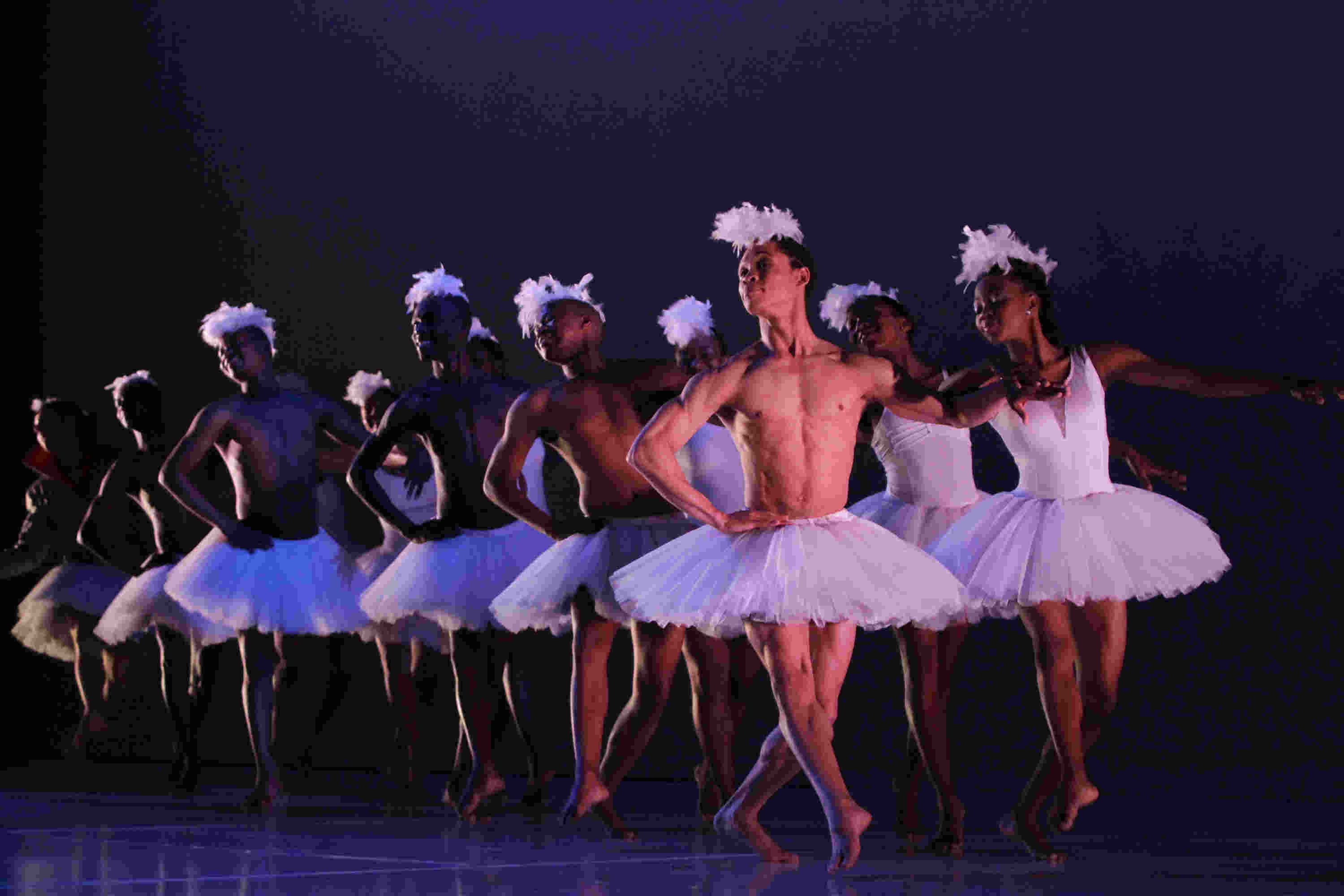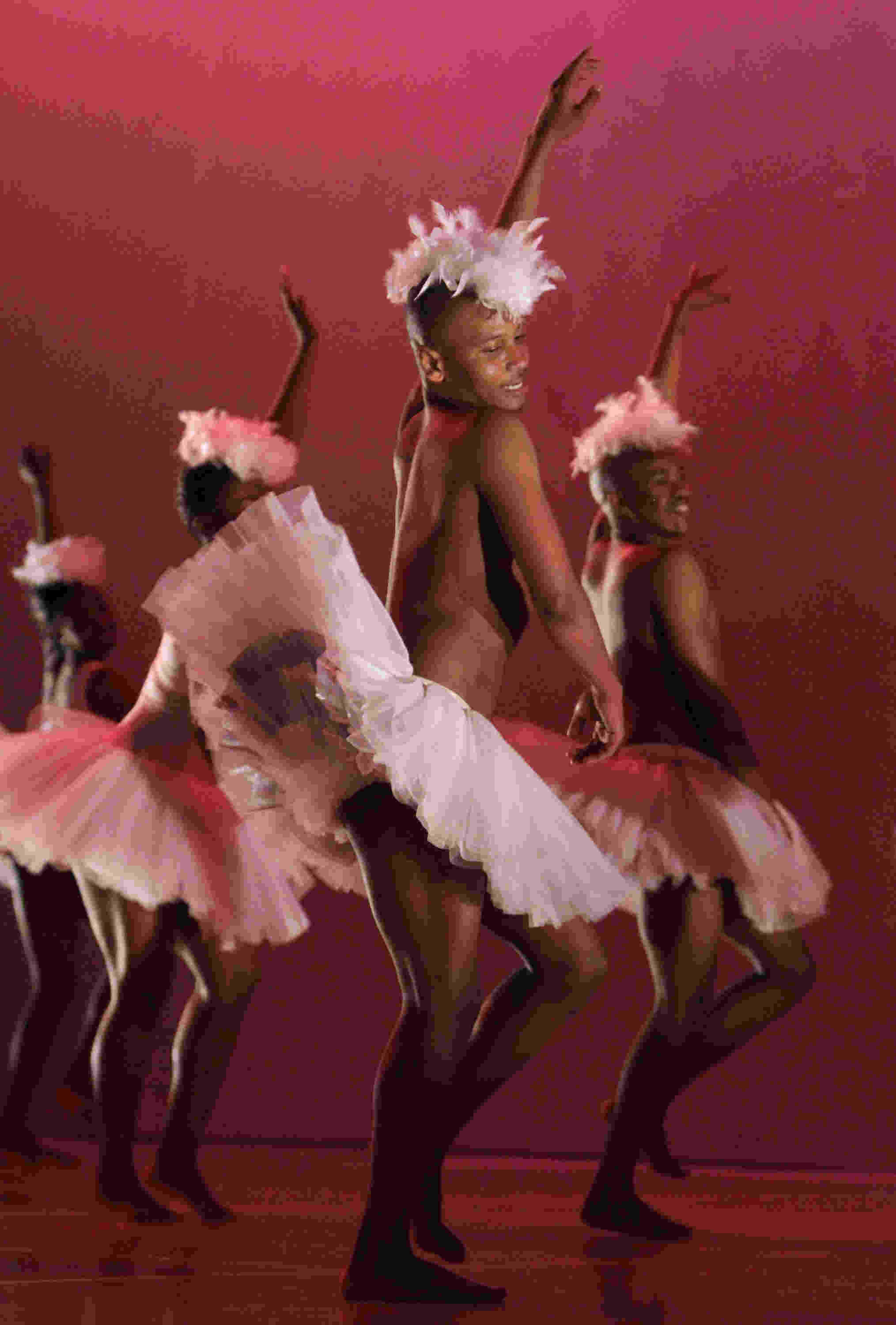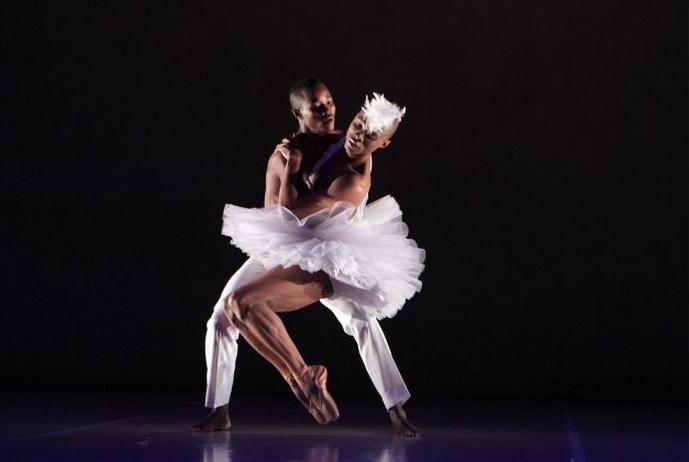There are all sorts of companies and shows out there that claim to “rock” the ballet, or otherwise shake up, take down or reinvent an art form that, they imply, is (breathe it softly, the dirty word) elitist, or at least irrelevant. Few, I’d imagine, perform this operation with anything like the skill and intelligence of Dada Masilo, whose 2010 version of Swan Lake opened the lively short smorgasbord season that Sadler’s Wells are calling their Sampled festival.
Masilo’s reinvention works because she understands ballet, and not just its conventions – though she skewers those with hilarious acuity in the piece’s opening sequence, where a narrator takes us through the events of your average white ballet. It starts with “surplus girls in the moonlight”, then the main man does “the virility splits”and it ends with a “fireworks and weightlifting” pas de deux, in which the main couple “do all the previous anti-grav twiddles, but more”. As well as giving the audience some belly laughs at the outset, always a good thing, this little sketch deftly nails some of ballet’s problems – that it can be formulaic, emotionally facile, and sexist.
 It can be – not that it always is, or has to be. Masilo is clearly not one to throw the baby out with the bathwater. By keeping a plot related to that of Swan Lake, by keeping a design and choreographic aesthetic that, however much it may subvert classical ballet, engages with it seriously rather than rejecting it, Masilo claims what is good in ballet, and shows it is just the same as what is good in any kind of dance: emotional honesty, conviction, discipline, and flair .
It can be – not that it always is, or has to be. Masilo is clearly not one to throw the baby out with the bathwater. By keeping a plot related to that of Swan Lake, by keeping a design and choreographic aesthetic that, however much it may subvert classical ballet, engages with it seriously rather than rejecting it, Masilo claims what is good in ballet, and shows it is just the same as what is good in any kind of dance: emotional honesty, conviction, discipline, and flair .
The predicaments of the central characters in Masilo’s Swan Lake resemble the original with a few names and genders switched. A man, Siegfried (Thabani Ntuli), is at odds with his society, and reluctant to marry, but the “swan” with whom, discovering his true self, he falls in love, is a man: Siegfried is gay, and terribly distressed by his parents’ insistence that he marry Odette, the girl they have chosen. Not much more happens than that, but then it doesn’t in Swan Lake either: the reason we dance this story rather than writing it down is to try and convey the swirling, complex, sometimes terrible clouds of emotion that make this simple plot (the love triangle) one of the most enduring and affecting in all of world myth and literature. Stories about loving the wrong person, or not being able to marry the right person are, after all, ultimately stories about bodies, and so bodies are the way to tell them.
 Masilo and her dancers stick to the truth of this dictum: though there’s a lot of shouting, it’s the dance that drives the action. Ntuli’s quiet containment and gentle movement speak volumes about the misery of his situation, while Boysie Dikobe as the man-swan Odile brings supremely graceful arms to his rendition of the Dying Swan – Masilo having achieved the incredible feat of choreographing it for a man on pointe, in a tutu, and making it both serious and beautiful. Around them we see a vibrant portrait of a society – parents, chosen bride, wedding guests – all wearing tutus and dancing a fabulous mash-up of ballet, gumboot, pantsula (South African urban social dance), and other African dance forms (pictured above). Masilo’s integration of these elements is skilful in the extreme, so much so that it actually makes ballet look like a legitimate source of inspiration for the average person’s basic party dance style – swan arms, arabesques and attitudes mixing easily with stamping, shuffling, and rhythmic hips. (It would seriously make my summer if this were to translate into a general trend in dancefloor shape-throwing; can you imagine?! The wedding reception disco would never be the same again.)
Masilo and her dancers stick to the truth of this dictum: though there’s a lot of shouting, it’s the dance that drives the action. Ntuli’s quiet containment and gentle movement speak volumes about the misery of his situation, while Boysie Dikobe as the man-swan Odile brings supremely graceful arms to his rendition of the Dying Swan – Masilo having achieved the incredible feat of choreographing it for a man on pointe, in a tutu, and making it both serious and beautiful. Around them we see a vibrant portrait of a society – parents, chosen bride, wedding guests – all wearing tutus and dancing a fabulous mash-up of ballet, gumboot, pantsula (South African urban social dance), and other African dance forms (pictured above). Masilo’s integration of these elements is skilful in the extreme, so much so that it actually makes ballet look like a legitimate source of inspiration for the average person’s basic party dance style – swan arms, arabesques and attitudes mixing easily with stamping, shuffling, and rhythmic hips. (It would seriously make my summer if this were to translate into a general trend in dancefloor shape-throwing; can you imagine?! The wedding reception disco would never be the same again.)
For the last quarter, the mood and aesthetic changes, moving away from bright lights and white tutus to flowing black skirts and a backdrop like a starlit night. Men and women, all bare-chested, switch to a serene, contemplative contemporary dance style, and the arc of the story dissipates into a general sense of peace, though under what conditions for Siegfried, Odette, and Odile is not clear; there is no narrative resolution here.
By any standards, this is a very smart, very skilful piece of dancemaking: for the work of a 25-year old choreographer, it’s extraordinary. Masilo has had prestigious awards and commissions in her native South Africa, and I sincerely hope that some will be forthcoming in this country, so we can see more of her. But not – please! - because her work is “accessible” or “relevant”: she may be both, but only because she is a fine artist with something to say.
- The Sadler's Sampled festival runs until 29 June.














Add comment